By Tom Demerly.
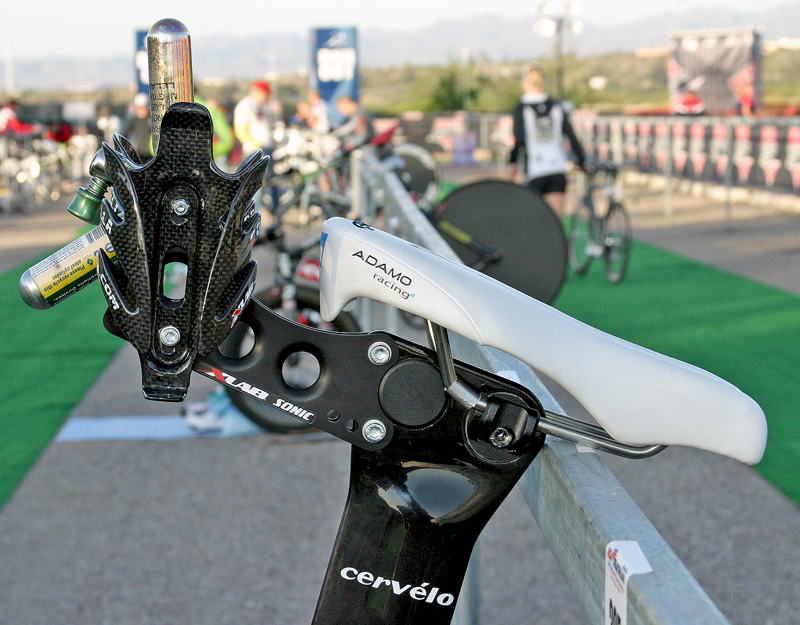
As ultra distance triathlons grow and bikes become more aerodynamic the need to carry bottles and spares has evolved. Early Ironman athletes were installing bottle cages behind their saddles to carry extra fluids on the Queen K in the 1980’s before the hydration category existed. Now the rear mount hydration system is its own category, largely dominated by one company, Craig Turner’s X-Lab. The rear mount hydration system seems to make sense from an aerodynamic perspective since the bottles ride in the lee or vortex of the rider. While aerodynamics are not that simple and the trend in hydration seems to be toward bike frame integration with Cervelo’s P4 and the new Treks, carrying bottles behind your saddle gives you additional options for carrying fluids, spares and tools.
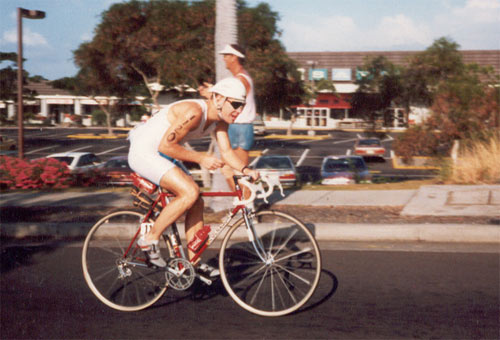
The primary disadvantage to rear mount hydration systems, with the exception of hose fed systems not included in this survey, is you have to reach behind you and remove- then replace, the bottle without being able to see it. This takes practice. Most riders leave the aero position and sit upright on their base bars to access their rear mounted bottles. Experienced riders grab and replace bottles smoothly from the aero position. Not all systems and bottle cages retain large bottles well. In fact, most do not. Rear mount systems have earned a bad reputation as “bottle launchers”. The truth is, when a rear mount system does lose a bottle, it is usually because it wasn’t installed or configured correctly, or both. If you choose a good system, like most X-Lab systems, and use them with rear-specific cages like X-Lab’s Gorilla cage, these systems hold bottles securely.
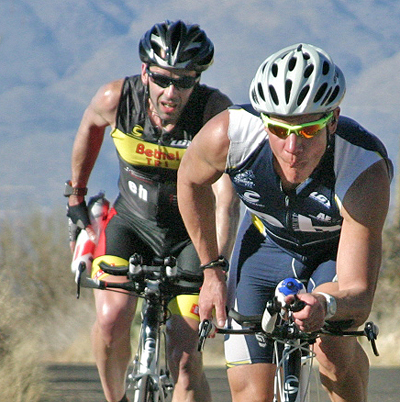
Rear mounted hydration carriers are subject to the shape of the saddle and seatpost you use. Not all systems work with popular triathlon saddles like ISM Adamo or bikes like Cervelo. It’s important to know what equipment you have and what hydration system will mount to it. Most systems require some patience with installation since threading a bolt into a small nut under a bike saddle around a saddle rail is a tight and awkward process. Give yourself plenty of time and read all instructions before mounting a rear hydration rig on your bike. This is not a project for the night before a big race. These systems take time to mount and time to get accustomed to using. Use a torque wrench and be particular about torque settings.
The Systems.
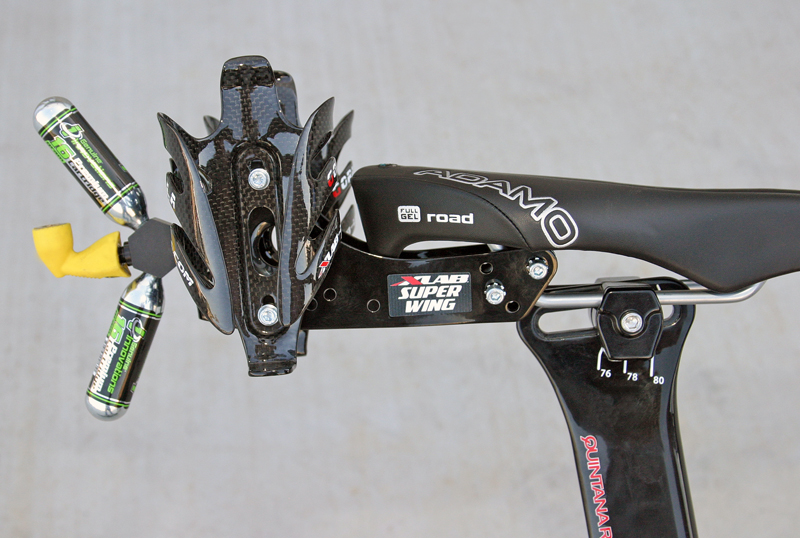
X-Lab: The Masters of Saddle Mounted Hydration.
X-Lab is not the first rear mount hydration system, but they are the best. Founded by aerospace engineer Craig Turner, X-Lab is a niche company that proves if you do one thing better than anyone, you’ll dominate the category. X-Lab’s engineering approach to saddle hydration mimics other industry leaders like Cervelo with their constant testing, refinement and innovation. X-Lab’s technical support is also the industry standard, their website is a useful resource for finding the right configuration for your bike and event and for specific technical guidance on installation. Much of the X-Lab equipment is manufacturered in the U.S.
X-Lab makes so many rear-mount hydration systems we did not include them all here. A future review will survey the X-Lab systems individually. What is worth understanding about X-Lab is that their systems are the best fitting, most robust and most adaptive systems available. Too many Ironman champions use X-Lab systems to list, including Chrissie Wellington and Craig Alexander. Our Team TriSports athletes universally prefer X-Lab over the other brands we sell.
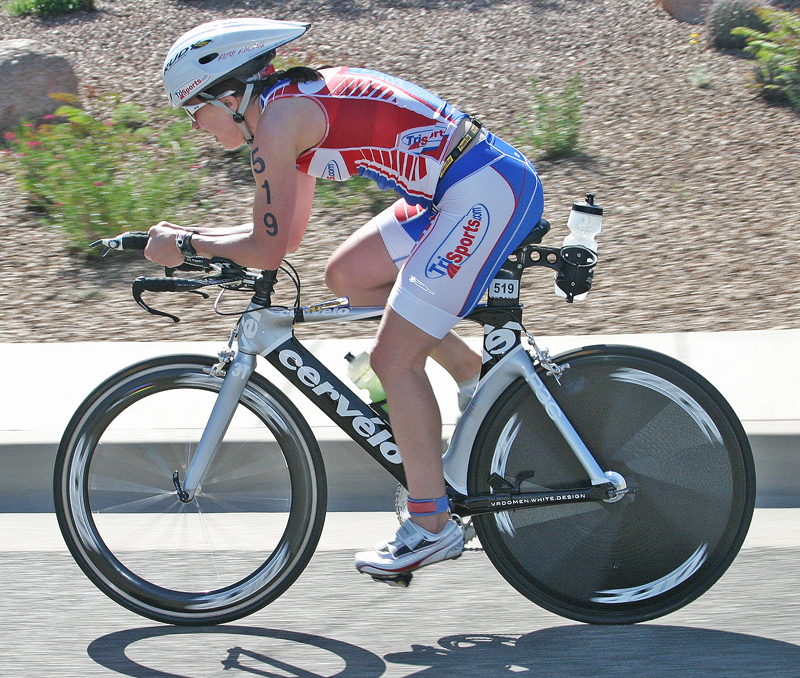
Technical details set X-Lab hydration systems apart and reveal Craig Turner’s aerospace engineering background. Every piece of X-Lab hardware is optimized and carefully chosen for its specific application. The mounting hardware is industry best. Turner’s X-Lab has made rear-mount hydration systems so long, and for so many bikes, they know what can go wrong and have designed around it. One examples is X-Lab’s fasteners. Triathletes can be lax with bike maintenance and checking torque specifications. X-Lab fasteners on key weight bearing areas include Nyloc nuts with a polymer insert to resist loosening from road vibration. Bolts are factory-coated with red Loctite that prevents loosening. The red Loctite treatment sets firmly 10 minutes after installation, and becomes semi-permanent after 24 hours of curing.

X-Lab’s website provides excellent information of installation of their systems, with insight on tools, torque settings and specifications on various configurations of their modular systems which are adaptable over a wide range of race distances. Basic tools needed to install a rear mount hydration system including X-Lab systems are the appropriate size metric hex (Allen) wrenches with a ball socket head for turning at angles in tight spaces, a torque wrench, open end wrenches and a metric nut driver in small metric nut sizes.
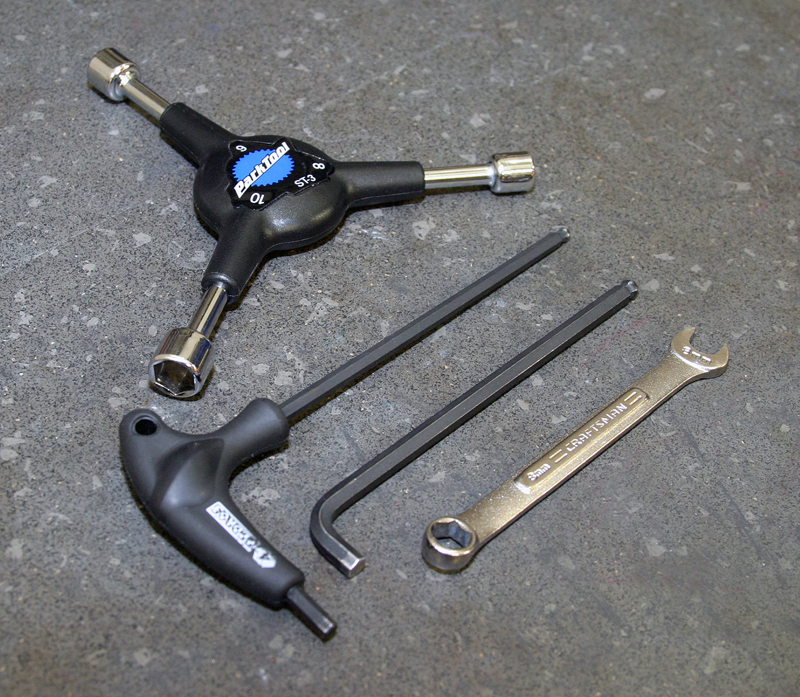
Another advantage of X-Lab systems is their compatibility with unconventional saddle designs such as the popular ISM Adamo. The long tails and transition hook on the back of ISM Adamo saddles mean X-Lab is the best fit on ISM Adamo saddles. Other saddles with unusual shapes such as the Fizik Arione family of saddles with its pointy rear protrusion and 30 cm length only work with X-Lab systems. X-Lab has even designed specific systems for proprietary bike designs like the deep aerodynamic shape of Cervelo seatposts. The fit and finish on these systems are superbly engineered and, once installed, stay very secure.

X-Lab also features an assortment of bottle cages including their rear mount specific Gorilla cage. The X-Lab Gorilla cage is the best choice for every brand of rear mount hydration system because of its excellent bottle retention. It’s almost impossible for a bottle to accidentally launch from an X-Lab Gorilla cage.
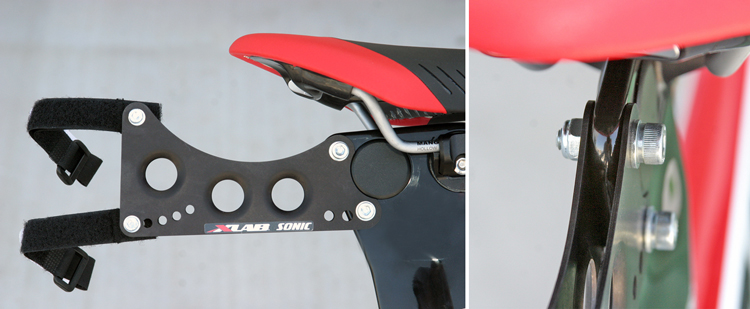
Note: Since X-Lab has such a complete selection of rear-mount hydration systems we will do a complete, X-Lab specific review with ratings in an upcoming issue of TriSports University.
Profile Design RM1.

The Profile Design RM1 had growing pains but is now a greatly improved product. The system clamps to standard 7mm dimension saddle rails and will not work with some carbon fiber rails such as 7X9 carbon braided saddle rails on premium saddles including the Fizik Arione Carbon and Fizik Aliante Carbon. The reworking of the original version of this product includes a strong, adjustable locking pivot that provides angular adjustment of the bottle mount to the saddle clamp. Early versions were Polymer. New versions are cast alloy.
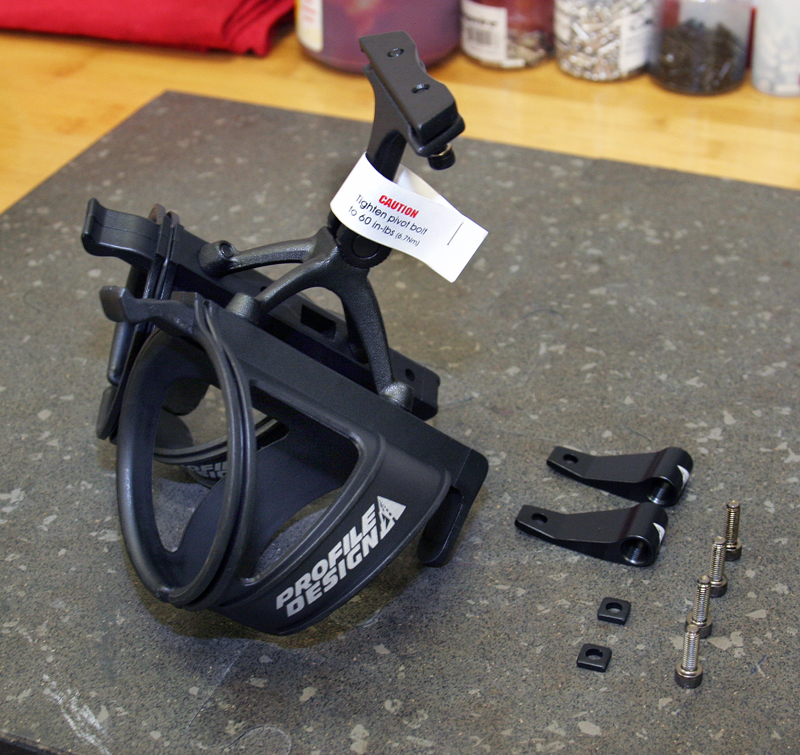
The system holds two bottle cages and Profile includes its excellent polymer “Profile Design Kage” (also sold by X-Lab as the P-Cage) that holds bottles securely on rear hydration systems. A small elastomer band wraps around the Kages to help with bottle retention. If this band breaks, which is rare, bottle retention is compromised. Replacement bands are available from Profile. The Profile Design Kages do not scratch water bottles during removal or replacement.
A nice touch to this system is a pair of threaded mounts to carry CO2 cylinders for flat repair. Be sure to use the small washers provided for the upper bottle cage mounting bolts when using the CO2 carriers so the Kages are bolted securely to the mount. If you don’t use the washers on the top bottle cage mounting bolts when mounting the CO2 carrier on the bottom mounts, the bottle cages are slightly bent on the carrier and don’t hold water bottles as well.
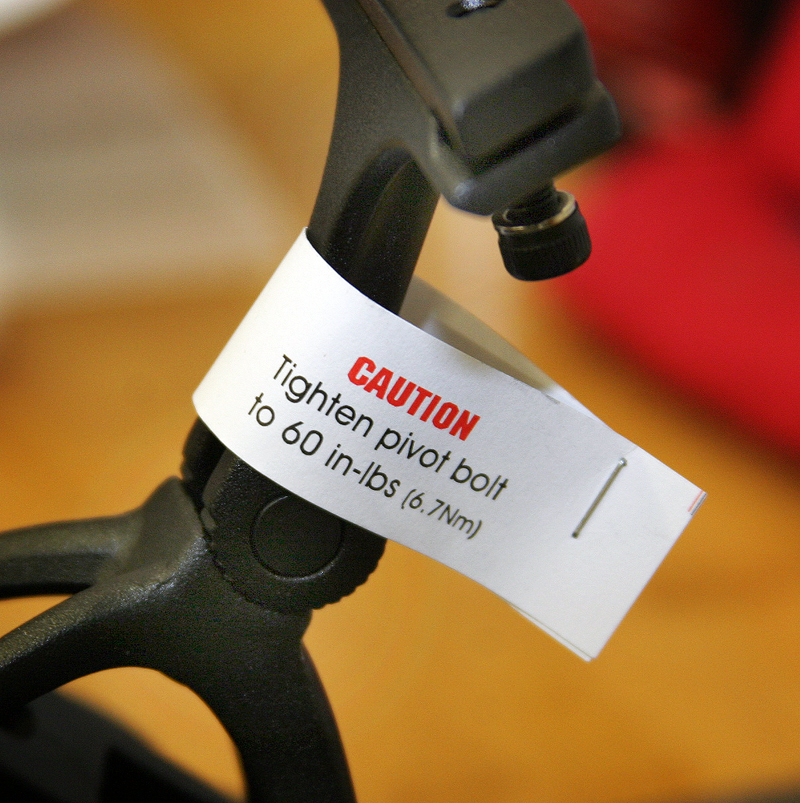
As with most systems you need a torque wrench to properly install this system with relatively high torque, 6.7 Newton Meters (Nm, or 60 inch-pounds) to keep it from slipping. The system is clearly labeled with this specification.
This system works well and provides reasonable bottle holding power. The design does require careful installation of cages at an optimal angle to resist losing bottles. Some oversized bottles may eject on very rough roads but normal use is secure and reliable. Given the right tools this system is easy to install and it does work with unconventional saddle designs such as ISM Adamo saddles like the one pictured in this review.
Profile Design RM1: Tom Demerly’s Rating: “★★★★” 4 Stars of Five. Light and relatively secure, fits ISM Adamo saddles, may not be optimal with large bottles on rough roads.
Minoura Single Cage Saddle Mount.
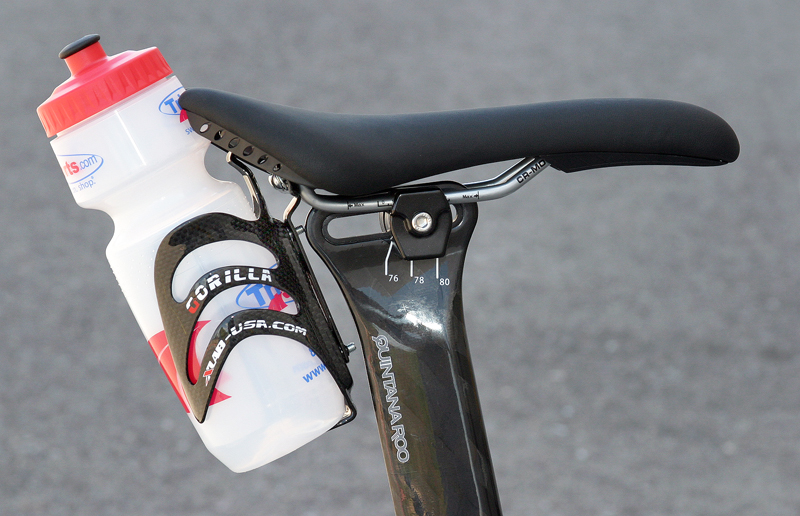
At well below $10 the Minoura Single Cage Saddle Mount is a bargain. It is a simple, all alloy mount that clamps to conventional saddle rails with two bolts and nuts. The system accommodates one conventional bottle cage and bolts are provided for mounting.
This mount will not work with most unconventional saddle designs such as Fizik Arione, ISM Adamo, most Cobb Cycling models and many seemingly conventional road saddles. It also interferes with deep section aero seatposts on bikes like Cervelo and Quintana Roo (pictured). The mount is relatively malleable so you can bend it slightly but too much bending will weaken it. This may be one of the systems that gave rear mount hydration carriers a bad reputation since it seems to amplify road shock vibration over its length potentially launching bottles over a bump.
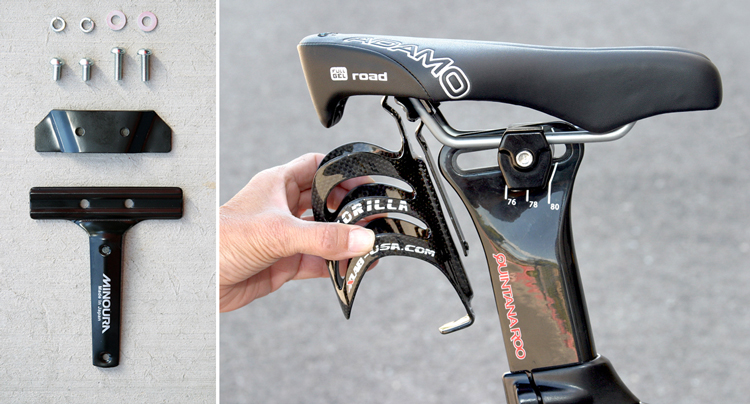
Those things being limitations the mount is simple, cheap and is a good problem solver on smooth roads if you have the right saddle- but many triathletes don’t.
Minoura Single Cage Saddle Mount: Tom Demerly’s Rating: “ ★” 1 Star of Five. Light and inexpensive but not very secure: Can eject bottles on bumps. Does not fit many popular triathlon saddles.
Minoura Double Cage Saddle Mount.
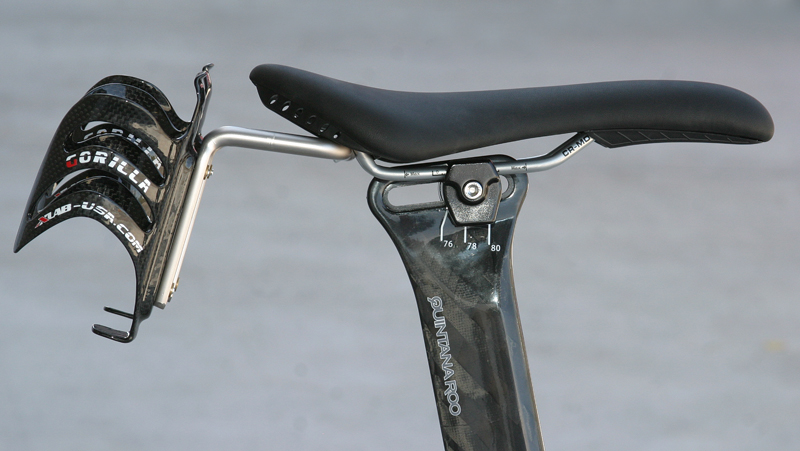
More robust, versatile and refined than the single cage saddle mount from Minoura, I’ve used this double mount system on the rough chip/seal roads at Ironman New Zealand with success. The system bolts to conventional saddle rails, but not the larger 7X9 carbon rails. I recommend the addition of red Loctite for a more secure installation of the mounting bolts under the saddle rails. Mine vibrated loose quickly without thread locking compound. Once coated with red Loctite, they stayed put.
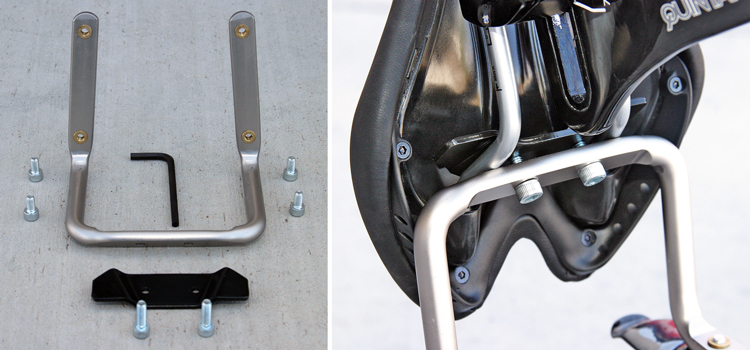
Because this mount is aluminum it can be bent slightly to an optimum angle giving it good fit versatility. I used mine on a 30 cm long Fizik Arione Tri saddle without problems or modification.
Because the mount is effectively a lever that will vibrate on bumps be fussy about what bottle cages you use. I’d recommend X-Lab Gorilla Cages but I’ve used the Profile Kage with success.
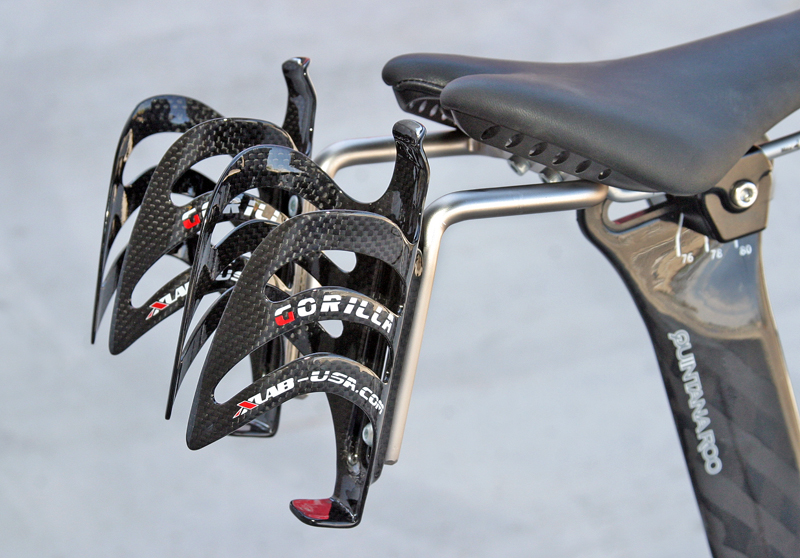
This system is also inexpensive and very light weight which adds to its appeal. Installation is very simple. A hex/Allen wrench is supplied with the system.
Minoura Double Cage Saddle Mount: Tom Demerly’s Rating: “ ★★★” 3 Stars of Five. Light and inexpensive. Relatively secure when installed with thread locking compound. Easy to install. Works with most saddles except some ISM Adamo saddles with long tails.
Beaker Concepts Hydro Tail Carbon.
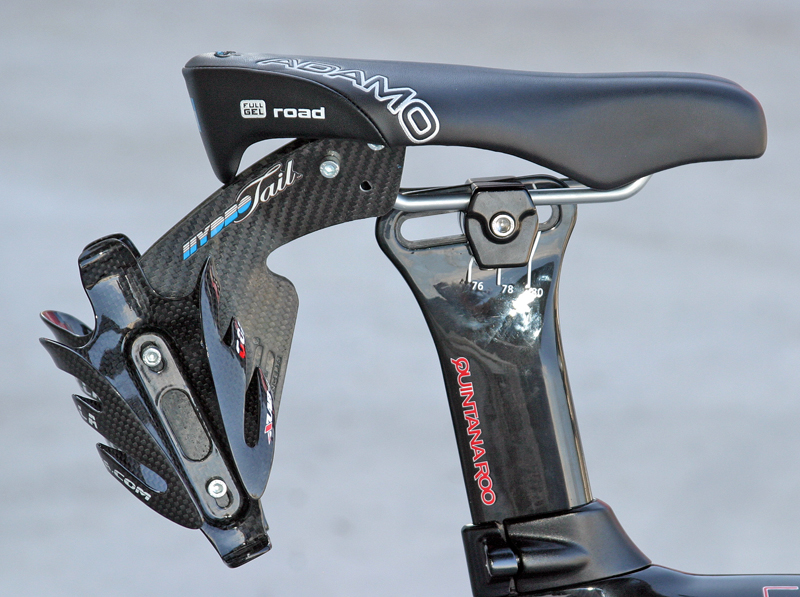
The Beaker Concepts Hydro Tail has been used by top pros and is a simple construction from a molded sheet of carbon fiber. Beaker Concepts also makes alloy versions and a Cervelo specific version that uses the two bolt holes on the back of a Cervelo aerodynamic seatpost such as the P4, P3 and P2.
The system mounts well on most saddles and works on the ISM Adamo family of saddles. You do have to moderately stretch the bracket open enough for the width of saddle rails which makes installation a bit fumbly. The system is supplied with Nyloc anti-vibration nuts that are secure when tightened.
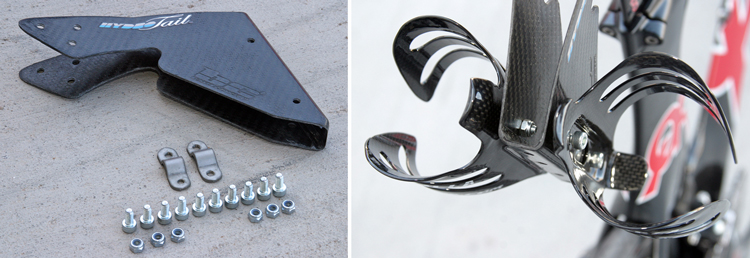
Mounting a cage to this carrier is tricky since there is little room inside the two sides to hold the nuts that the bottle cage bolts thread into. Use needle nose pliers, a multitool or even heavy forceps to hold the nuts inside the mount while threading in the bolts and start with the top bolts on each side for an easier installation.
The mounting holes allow for some angular adjustment of the carrier (except on ISM Adamo, where you need to angle it downward) and stay relatively snug when installed with Loctite.
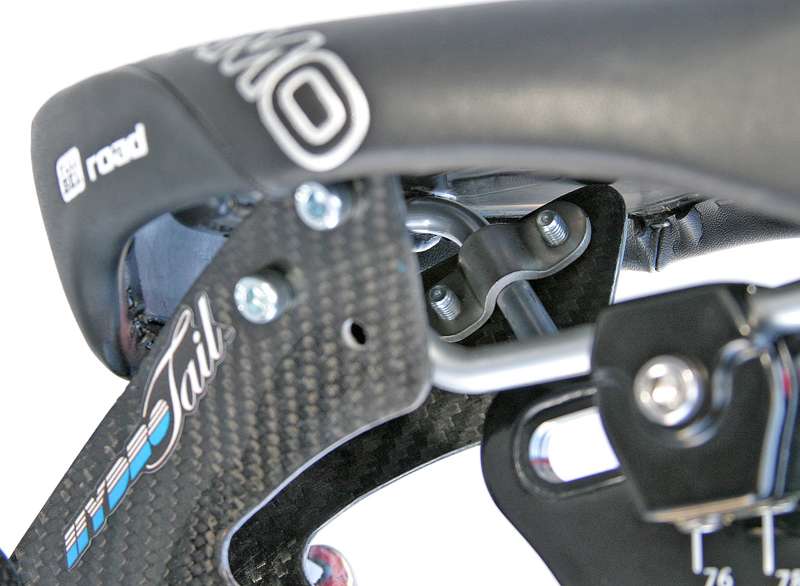
The entire family of Beaker Concepts Hydro Tails including the alloy versions are nice designs with few drawbacks that hold bottles and cages securely and provide a degree of angular adjustment. They are proven in Kona by athletes like Normann Stadler and have reasonable adjusment.
Beaker Concepts Hydro Tail Carbon: Tom Demerly’s Rating: “ ★★★★” 4 Stars of Five. Lightweight and robust. Holds bottles very well when used with good cages. Some adjustment, works with most ISM Adamo saddles.
Tacx Saddle Clamp.
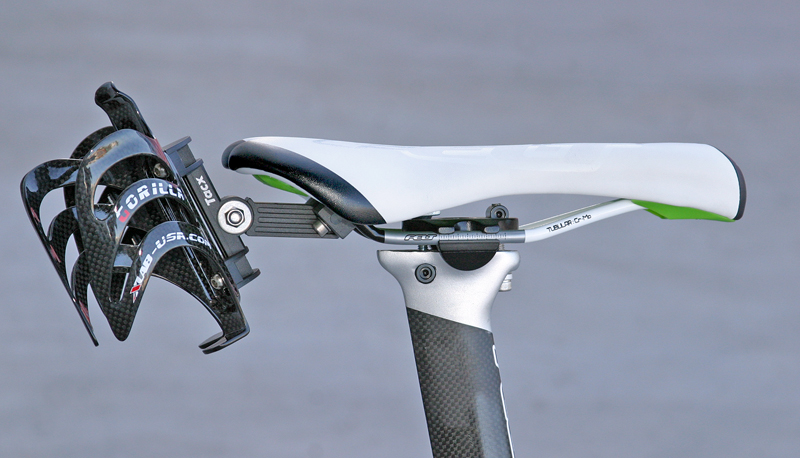
Inexpensive and lightweight if a bit fumbly to install, the Tacx Saddle Clamp works with short-tailed saddles but is a no-go for Fizik Arione saddles and ISM Adamos. It holds two bottle cages grouped tightly together. There is an adjustment for the angle of the bottles and you need to get this right or you’ll be launching bottles on bumps.
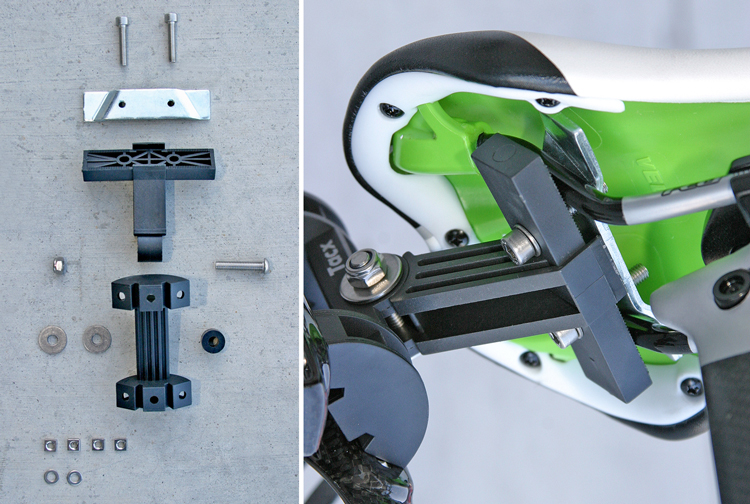
Since this system holds the bottle cages at the end of a small lever it tends to amplify vibration. Add to that the flexible polymer construction and this becomes a rear-launching anti-bike weapon if used with the wrong bottle cages. This little system needs a robust, tight cage such as X-Lab Gorilla cages, which undermines the thrifty price. Tacx Tao or Profile Kages work acceptably for small size bottles. If you grab an oversized bottle in an aid station and slide it in this system watch out for bumps.
The system is inexpensive but rife with limitations. You’ll likely upgrade to an X-Lab system quickly.
Tacx Saddle Clamp: Tom Demerly’s Rating: “ ★” 1 Star of Five. Lightweight but flexible. Good bottle cages are a must to prevent bottle launching. Some angular adjustment. Does not work on Fizik long tailed Arione and ISM Adamo saddles.
